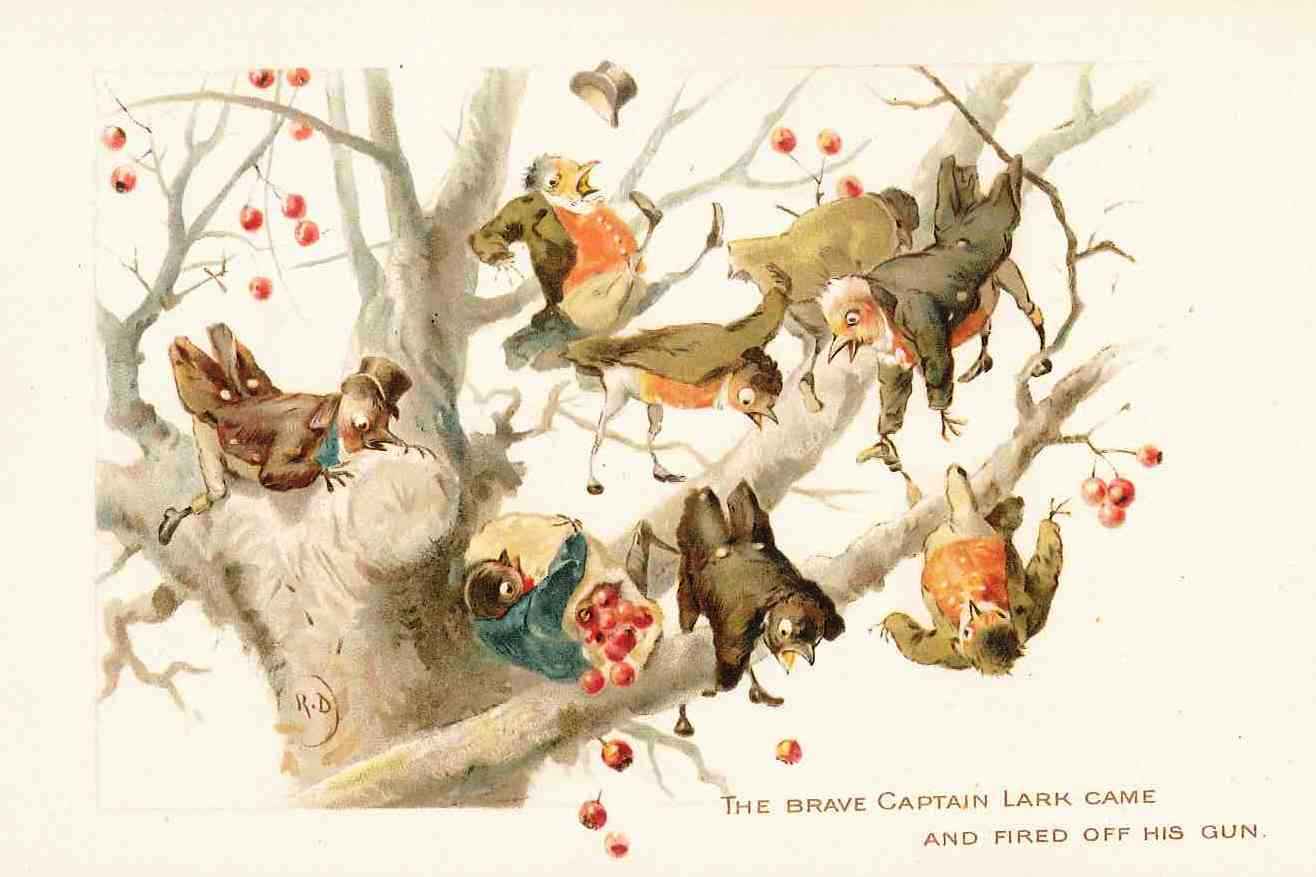This illustration is from The Twigs, or, Christmas at Ruddock Hall illustrated by Robert Dudley, published in London by Castell Brothers, 1890.
Yesterday we mused on why robins are associated with Christmas, which led to the discovery that Victorian postmen were nicknamed Robins. But why is the nation’s favourite bird called a robin in the first place? Well, it hasn’t always been called a robin.
Learning about this produced a lightbulb moment – I understood why this charming, whimsical book about a family of robins is called The Twigs, or, Christmas at Ruddock Hall. The robin’s earliest recorded name is ruddock, spelt ruddoke in Middle English, which in turn derived from the Old English rudduc. The first part of the word, rudd, means red, and -ock is a suffix which means small, so ruddock means, in effect, small red one. After several hundred years ruddock gradually morphed into redbreast.
In the early 15th century it became popular to nickname animals and birds with human names, such as Jenny Wren, Tom Tit, Billy and Nanny Goat and so forth, so the name Robin was added to form Robin Redbreast. Why Robin? It’s difficult to be sure of how a certain usage arose. In this case it is perhaps because the name Robin is a familiar, or diminutive, form of the name Robert, thought to derive from the French, with the suffix -in denoting something small. Small Redbreast sums up a robin quite nicely.
#victorianchildrensbooks #victorianchristmas #adventcalendar #victorianpicturebooks #advent #childrenspicturebooks #victorianillustration #victorianillustrators

Fascinating insights into the etymology of “robin”! Thankyou! It makes me wonder how “Jenny Wren” originated? Maybe Dickens knew the traditional origin, encouraging him to create Jenny Wren in Our Mutual Friend as a nick-name for the small but determined Fanny Cleaver, the dolls’ dressmaker.
What an interesting thought about Dickens and Jenny Wren – more research required!